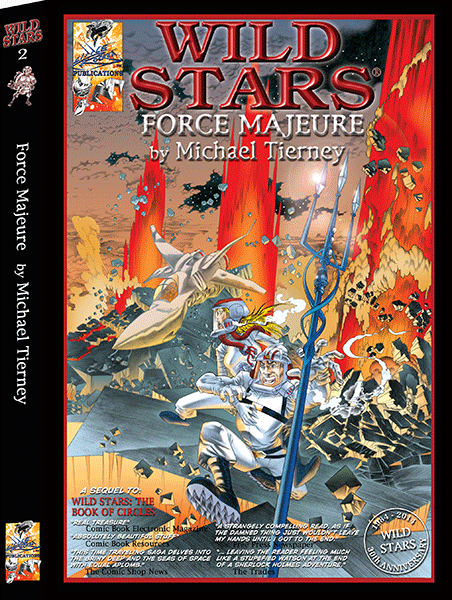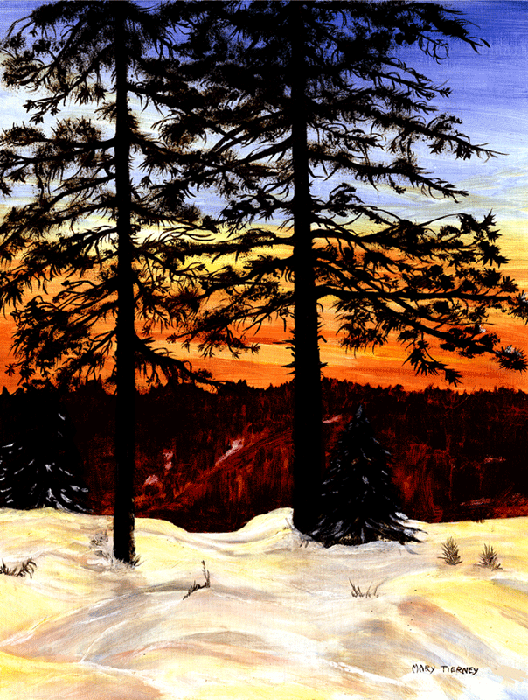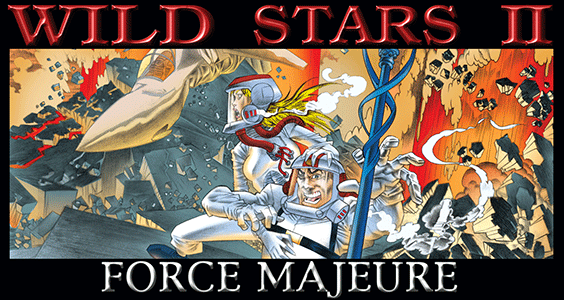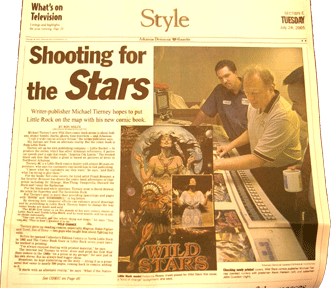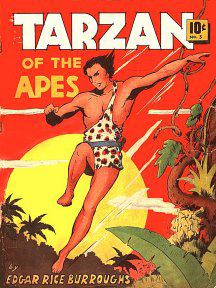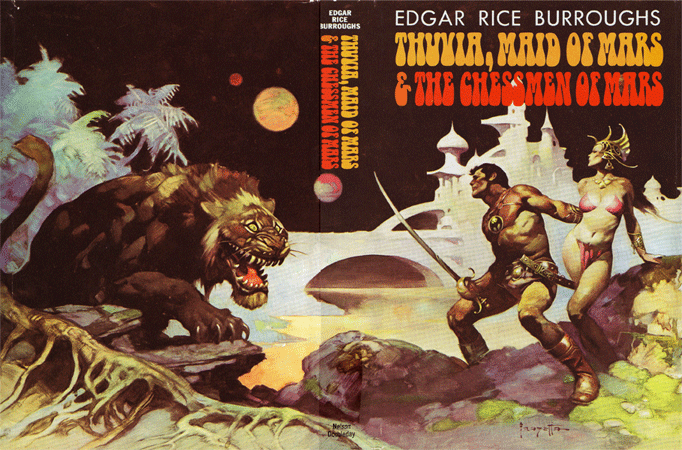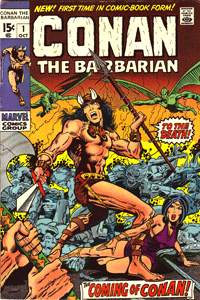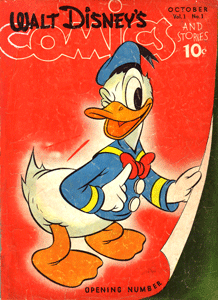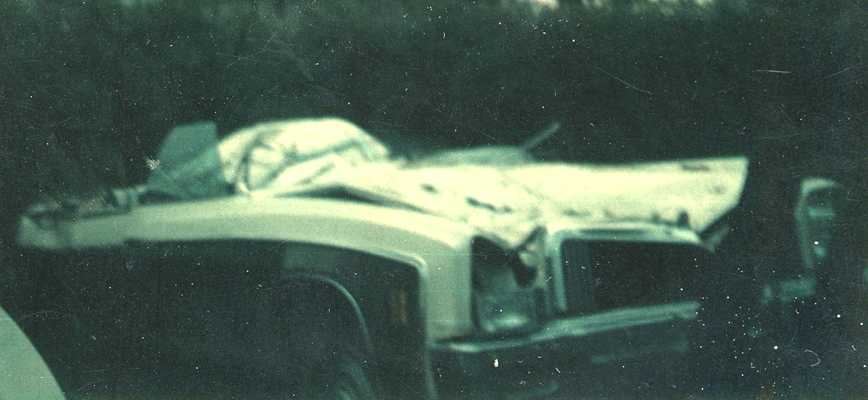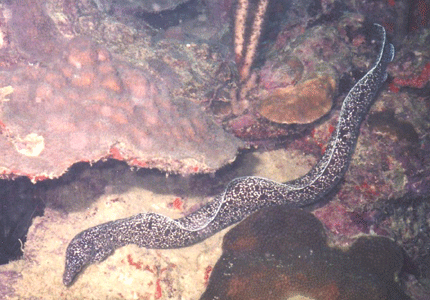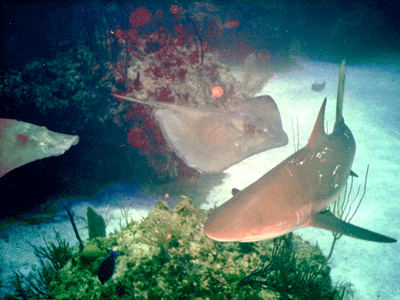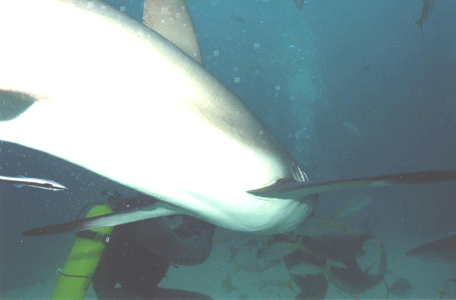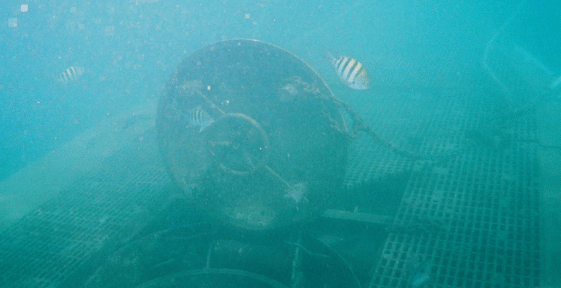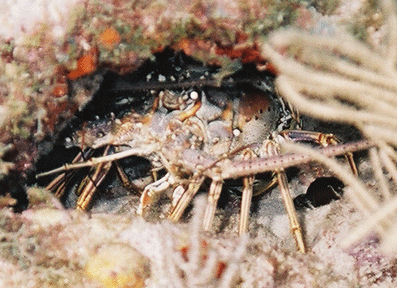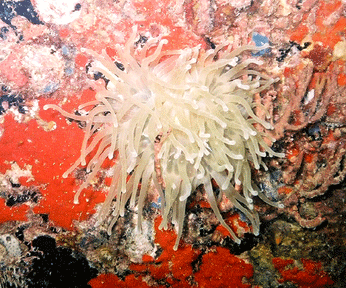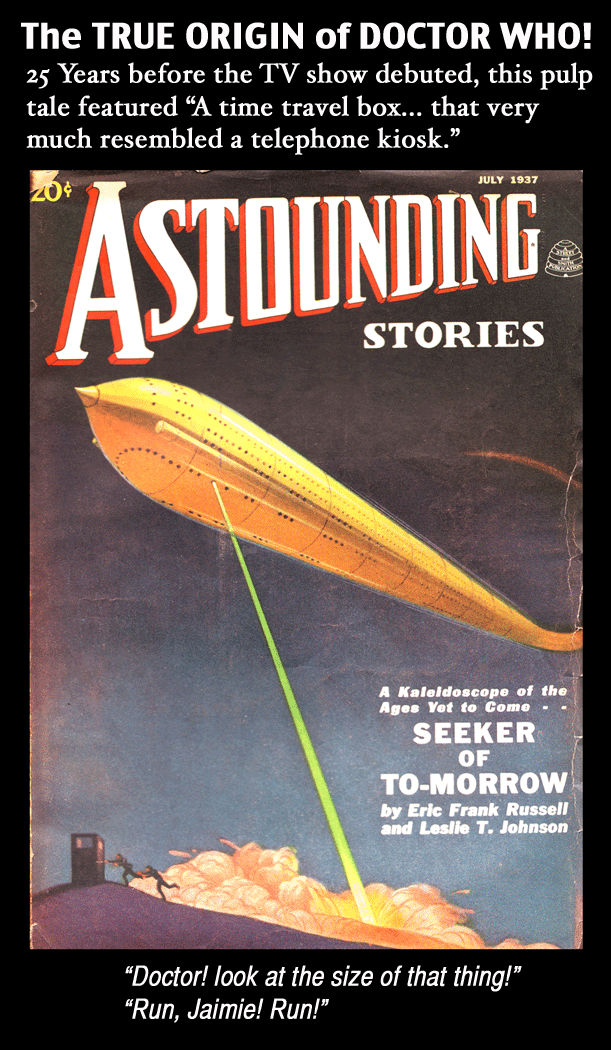
|
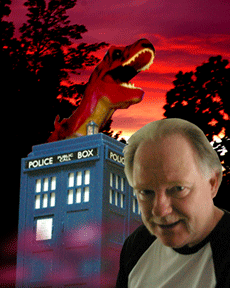
Doctor Who -- A Guide For New Viewers
by Michael Tierney
Doctor Who is an alien from the planet Gallifrey, known only as the Doctor, who stole an ancient device called a TARDIS -- an acronym for Time And Relative Dimensions In Space. He is also a member of the Gallifreyan sect of Time Lords, unique beings gifted with twelve lives and pledged to protecting the streams of time from tampering. Of course, the Doctor ends up doing a whole lot of tampering of his own.
Condemned by his fellow Time Lords, the Doctor eventually earned exoneration by performing many difficult tasks during his travels through time and space.
Across the Atlantic, Doctor Who was a main staple of British science-fiction culture as a BBC TV show in half-hour multi-part episodes that ran for nearly forty years before going into a ten year hiatus.
In America, he found a second life in reruns that made him into a cult culture item. I'd heard of the show back in the Seventies, but never really discovered the Doctor until his revival half a dozen years ago as an hour long drama.
The new incarnation featuring actor Christopher Eccleston was comparable to America science-fiction TV, with modern special effects and quick movement in the editing. There were still occasional multi-part stories, but most episodes were stand-alone stories that were often fitted into larger plots.
For example; actor David Tenant had a hand cut off in combat when he first appeared as the Tenth Doctor. Fortunately, his still active regeneration process immediately grew another one, but that severed hand would bounce around through the series, and the spin-off Torchwood series, until it came back into play at the end of Tenant's run. When parting ways with his long-time traveling companion and chaste love interest, Rose Tyler, the Doctor's regeneration process turned the hand into a human-Time Lord hybrid of Tenant's Doctor, who then went off with Rose into an alternate reality. The emotional connection between the Doctor and the supporting characters was always an important element that made the stories better and better with each successive season.
Regeneration and companions who come and go are key components of the Doctor, but most important is the concept of Time Travel. The thought of Time Travel has always fascinated me. When you can go anywhere at any time, you have the opportunity to tell any and every kind of story, which is why I've used it as a component in many of my own stories.
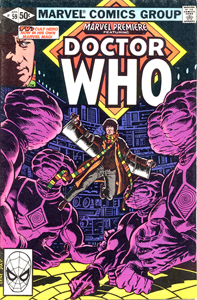 Doctor Who wasn't shown where I grew up in Kansas. After moving as a young adult I'd tried one PBS broadcast. But the air quality was very poor. After the opening sequence with Jon Pertwee in his white wig and foppish clothes, hiding behind a rock as some actors in ridiculous monster outfits shuffled by, and my first encounter was over in minutes. I'd later learn that the episode was a middle chapter of The Monster of Peladon, and the foolish-looking monsters were Ice Warriors.
Doctor Who wasn't shown where I grew up in Kansas. After moving as a young adult I'd tried one PBS broadcast. But the air quality was very poor. After the opening sequence with Jon Pertwee in his white wig and foppish clothes, hiding behind a rock as some actors in ridiculous monster outfits shuffled by, and my first encounter was over in minutes. I'd later learn that the episode was a middle chapter of The Monster of Peladon, and the foolish-looking monsters were Ice Warriors.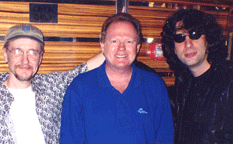 Decades would pass as I sold Doctor Who comics, never reading one, before I gave the Doctor another chance with the Fox TV movie meant to relaunch the franchise in Nineties America, and finally learned the concept behind behind the character. But the Doctor then disappeared again until the BBC's recent relaunch. At the time of this writing, the most recent episode was "The Doctor's Wife," written by comic scribe and novelist Neil Gaiman, which gave the soul of the Tardis voice for the first and only time in the series. (In the 2000 photo to the left, Sandman artist P. Craig Russell on the left is signalling comic retailers are #1 behind my head, with Neil Gaiman on the right) As it turns out, the Tardis feels she (prefers to be called "Sexy") is the one who stole the Doctor, not the other way around.
Decades would pass as I sold Doctor Who comics, never reading one, before I gave the Doctor another chance with the Fox TV movie meant to relaunch the franchise in Nineties America, and finally learned the concept behind behind the character. But the Doctor then disappeared again until the BBC's recent relaunch. At the time of this writing, the most recent episode was "The Doctor's Wife," written by comic scribe and novelist Neil Gaiman, which gave the soul of the Tardis voice for the first and only time in the series. (In the 2000 photo to the left, Sandman artist P. Craig Russell on the left is signalling comic retailers are #1 behind my head, with Neil Gaiman on the right) As it turns out, the Tardis feels she (prefers to be called "Sexy") is the one who stole the Doctor, not the other way around.As the sixth season featuring the third new incarnation of the Doctor neared, I'd finally gotten curious enough to want to explore his earlier incarnations. Most of them are now available on DVD, with the rest of those still in existance due for release by 2012.
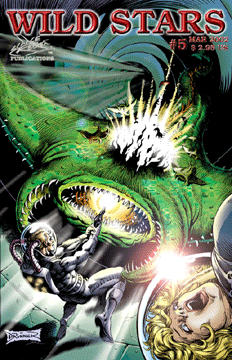 Another thing that made me curious was when two specials at the end of David Tenant's run looked like they might have drawn some inspiration from my Wild Stars comics. "The Planet of the Dead" from 2009 featured a predator that looked nearly identical to the Demon shown on the cover of my 2002 Wild Stars comic. In both cases, these super predators had turned whole worlds into dead planets, and then made short Earth incursions that each ended in a tunnel.
Another thing that made me curious was when two specials at the end of David Tenant's run looked like they might have drawn some inspiration from my Wild Stars comics. "The Planet of the Dead" from 2009 featured a predator that looked nearly identical to the Demon shown on the cover of my 2002 Wild Stars comic. In both cases, these super predators had turned whole worlds into dead planets, and then made short Earth incursions that each ended in a tunnel.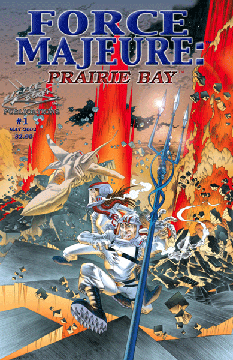 Then in the 2010 "Water of Mars," they used the concept of water being found on mars, but not much else from my 2002 Force Majeure: Prairie Bay #1. My use, however, was years before the Mars rovers actually discovered ice on the planet. The NASA picture below was actually taken years after the cover was published, but how those geyser craters match the cover is uncanny.
Then in the 2010 "Water of Mars," they used the concept of water being found on mars, but not much else from my 2002 Force Majeure: Prairie Bay #1. My use, however, was years before the Mars rovers actually discovered ice on the planet. The NASA picture below was actually taken years after the cover was published, but how those geyser craters match the cover is uncanny.
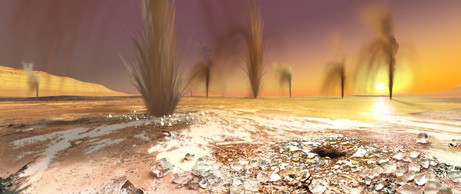
In those early episodes the Doctor may be the title character, but the school teacher from Earth is the action hero. When actor William Russell decided to leave at the end of the second season, his character of Ian Chesterton was replaced by new action hero Steven Taylor, played by Peter Purves.
The writers used the same solution when William Hartnell decided to leave his role as the Doctor, but in this case they didn't simply replace him with a new character, but instead chose to reincarnate him. The new Doctor would retain all the memories and knowledge of the old Doctor, but his appearance and personality were all new. This gave the new actor Patrick Troughton the levity to infuse his own stamp on the character.
The Doctor would go on to have many future regenerations, each with their own different personality and often peculiar behavioral patterns.
Viewing recommendations to get started are:
"The Unearthly Child -- 1963." Pilot episode.
"The Daleks -- 1963/64." This second episode introduces a foe who will battle the Doctor throughout all of time.
"The Dalek Invasion of Earth -- 1964." From early in the second season, this episode features the departure of the Doctor's Granddaughter Susan.
"The Romans -- 1964." While this is a strictly historical adventure much in the tone of the (mostly) lost "Marco Polo," the writing on this one is so good, you shouldn't miss it. It also features the series' first comedic death, and how the Doctor inspired Nero to burn Rome -- albeit not intentionally.
"The Web Planet -- 1965." By today's standards, this episode does not stand up very well. But it's worth watching if you can appreciate how incredible it must have looked way back in 1965, with man-sized ants battling flying Mothmen. It's a very ambitious effort, using wires and flying harnesses long before the exploits of Hong Kong action films. It also has a strong ecological undertone.
"The Chase -- 1965." School teachers Ian Chesterton and Barbara Wright, whom the Doctor kidnapped in the Pilot when they followed his Granddaughter Susan into the Tardis, are finally returned home and the cast of companions changes once again.
"The War Games -- 1969." While not much of second Doctor Patrick Troughton survived to choose from, this eight-episode epic that concluded his run also revealed his problems with the Time Lords and led to his being exiled on Earth. I wonder if this was inspired by the Silver Surfer's punishment when he was trapped on Earth in his first solo series, which debuted the year before?
"The Three Doctors -- 1972/73." John Pertwee's Doctor is reunited with his two previous incarnations, and the secret of the Time Lords' ability to travel through time is revealed as the Doctor saves Gallifrey from destruction. As a reward, the Time Lords free the Doctor from his exile on Earth. Unlike the first Doctor, Pertwee's Doctor embraced the role of action hero, and often used Venusian karate in combat.
"Genesis of the Daleks -- 1975." Fourth Doctor Tom Baker is once again given a difficult task by the Time Lords, when he and companions Harry Sullivan and Sarah Jane Smith (who would later spin off into her own namesake series) are sent to planet Skaros to stop the creation of the Daleks. While he only stalls their creation, I'm still wondering if some future episode will explain what repurcussions there might have been for changing the future timeline where he'd previously left his Granddaughter Susan?
"Face of Evil -- 1977." The Doctor returns to his home planet of Gallifrey for the first time, where he's framed for murder by an old nemesis; the now skull-faced Time Lord known as the Master. By the time of Tom Baker, the production quality of the series had reached more modern levels, which might explain why Baker's Doctor is considered by many to be a high point of the series.
One thing that the series has never done in what I've seen so far, and I expect is just a matter of time (pun intended), is the use of the Doctor's reincarnation process as a key story plot point, instead of simply as a device to move actors in and out. Of course, if they were ever to nail him to a cross, that'd be pushing too much into controversy.
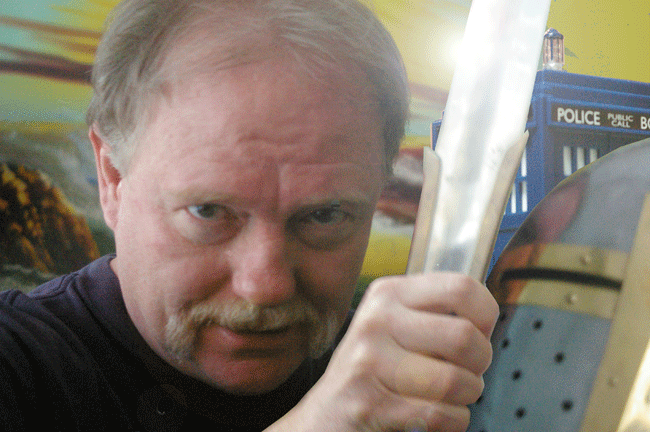 These episode recommendations are some starting points from which an individual might learn whether they want to explore the older mythos further, and if so, where and when.
These episode recommendations are some starting points from which an individual might learn whether they want to explore the older mythos further, and if so, where and when.After all, Where and When are what Doctor Who is all about.
Michael Tierney -- May 16th, 2011
Part One dealt with the first quartet of Doctors, and Part Two examines the second quartet.
This book is real and unaltered. The top quote is from the text.
The bottom quotes are some of the most common from the era of the Second Doctor, Patrick Trouton.
It was a runing gag that Jaimie, a medieval Highlander whom Doctor had saved,
would start each new adventure with a brogue variation of:
"Doctor! Would you look at the size of that thing."
At some point soon after, they were running for their lives.
All of the Doctors often advised; "Run! Run!"
The bottom quotes are some of the most common from the era of the Second Doctor, Patrick Trouton.
It was a runing gag that Jaimie, a medieval Highlander whom Doctor had saved,
would start each new adventure with a brogue variation of:
"Doctor! Would you look at the size of that thing."
At some point soon after, they were running for their lives.
All of the Doctors often advised; "Run! Run!"
For more visual fun, visit the cartoon page.
© 2011 by Michael Tierney.
Wild Stars is a Trademark TM of Michael Tierney
Little Rocket Publications is a Trademark TM of Tierney Incorporated



